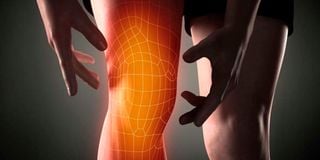What are the leading causes of knee pain for men?

Applying ice to the affected area can reduce swelling and pain.
What you need to know:
- Knee pain can be caused by various injuries, diseases, or conditions.
- If you are experiencing knee pain, you can do a few things at home to help treat it such as applying ice or heat to the affected area to reduce swelling and pain.
- Exercises that stretch and strengthen the muscles around the knee can also help reduce pain.
Knee pain can be a real nuisance, especially when it keeps you from doing the things you love. Since the knee is a complex joint subjected to a lot of wear and tear, it is not surprising that knee pain is a common problem.
The good news is that most causes of knee pain are treatable, and with proper treatment, you can get back to your normal activities. Here are some causes of knee pain in men and how to treat them.
Injury
An injury to the ligaments or tendons around the knee can cause pain. Common injuries include strains and sprains. These types of injuries are often caused by overuse or trauma.
- Strains: This type of injury occurs when a muscle or tendon is stretched too far. It is usually caused by overuse or excessive stretching. Strains may cause pain, swelling, and stiffness in the knee.
- Sprains: This type of injury occurs when a ligament is stretched too far. It is usually caused by trauma, such as a fall or car accident. Sprains may cause pain, swelling, and instability in the knee.
Treatment for injuries typically involves rest, ice, compression, and elevation (RICE). In some cases, physical therapy may be recommended.
If the pain is severe, you may need to wear a splint or brace.
Surgery
If you have had surgery on your knee, you may experience pain afterward. This is normal and will usually improve over time.
Some people may experience acute pain after surgery. This is known as post-operative pain. Treatment for post-operative pain usually involves medication, physical therapy, and exercises.
Obesity
Being overweight or obese can put extra strain on your knees, leading to pain. Losing weight can help reduce the pain and improve your overall health.
Disease
There are various diseases that can cause knee pain. Common infections include:
- Rheumatoid arthritis: Occurs when the immune system attacks the joints. It can cause pain, swelling, and stiffness in the knee.
- Gout: Occurs when there is too much uric acid in the body. It can cause sudden, severe episodes of pain, swelling, and redness in the joint.
- Septic arthritis: occurs when there is an infection in the joint. It can cause fever, pain, swelling, and warmth in the knee.
- Osteoarthritis: This is the most common type of arthritis. It occurs when the cartilage in the joint wears down. It can cause pain, stiffness, and swelling in the knee.
Treatment for diseases typically involves medication, physical therapy, and exercises. In some cases, surgery may be recommended.
Symptoms associated with a knee pain
- Swelling
- Stiffness
- Warmth
- Redness
If you are experiencing any of these symptoms, consult a doctor. They will diagnose the cause of your pain and recommend the best treatment for you.
Diagnosing the knee pain
Your doctor will ask about your symptoms and medical history. They will also examine your knee. In some cases, they may order tests, such as an X-ray or MRI.
When to visit the doctor
- When you experience instability
- If the pain is severe
- If the pain persists for more than six weeks
- If you have had surgery on your knee
- If your joints are locking
- A pop sensation
- Inability to walk
Home remedies for knee pain
- Ice: Applying ice to the affected area can reduce swelling and pain.
- Heat: Applying heat to the affected area can relax the muscles and relieve pain.
- Exercises: Stretching and strengthening exercises can improve flexibility and reduce pain.
- Massage: Massaging the affected area can relax the muscles and relieve pain.




